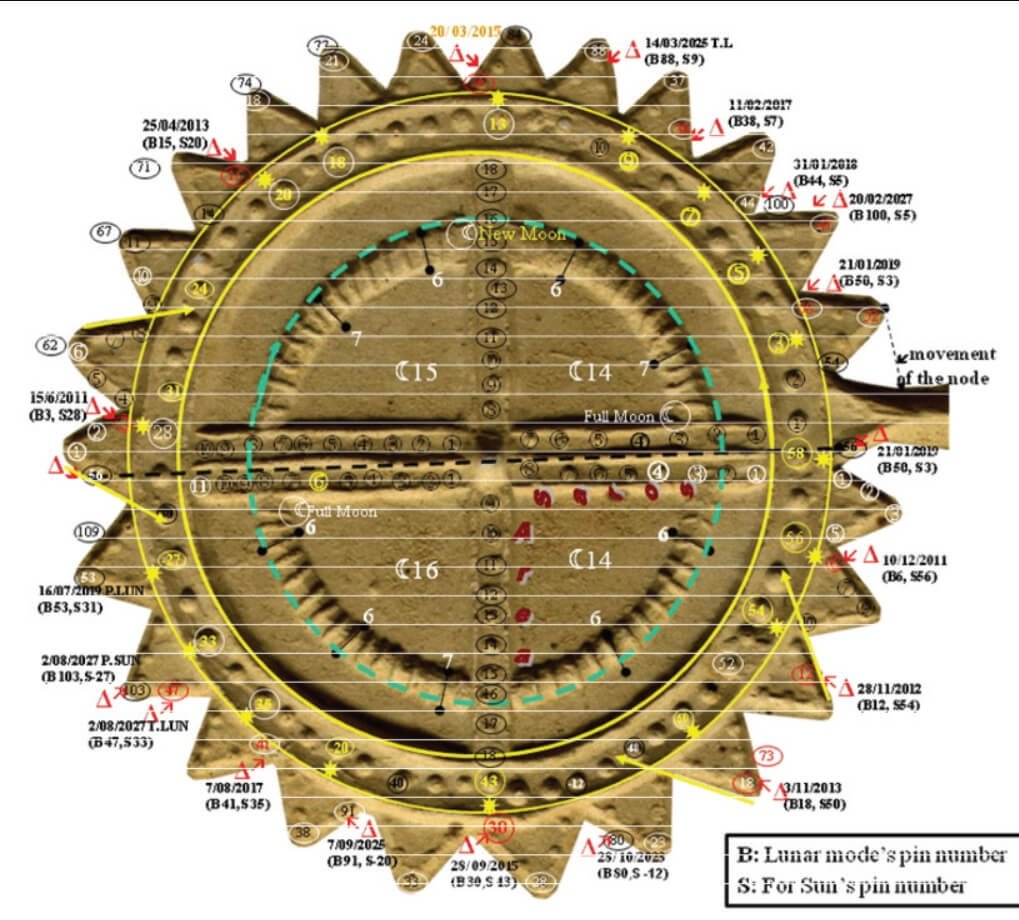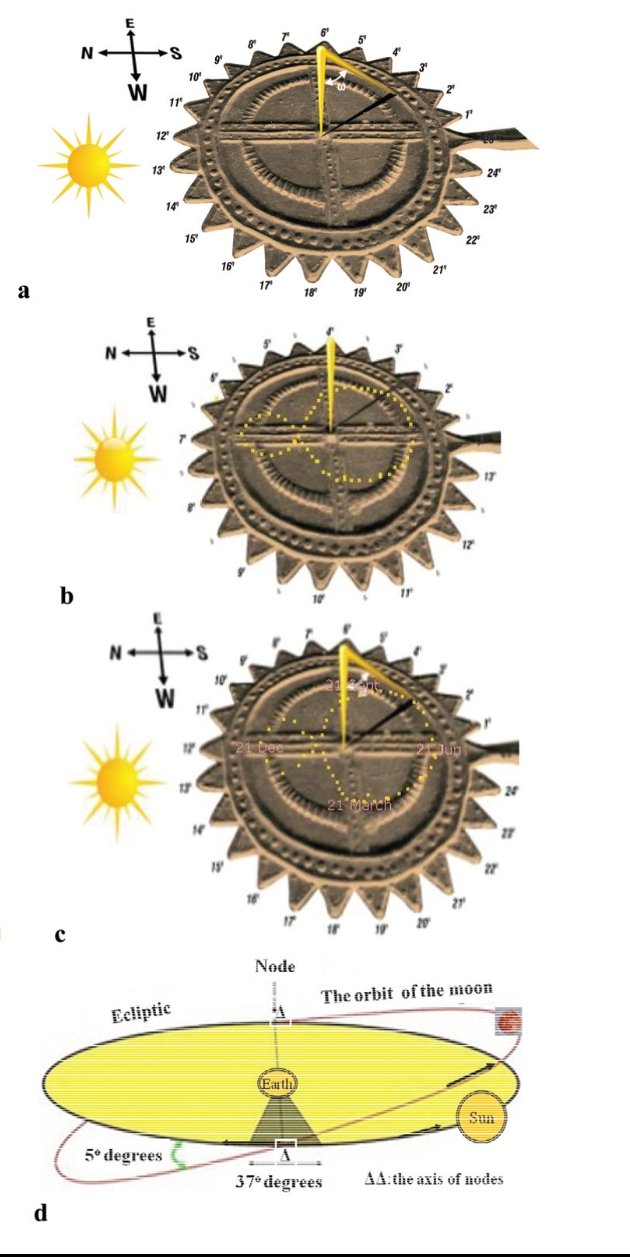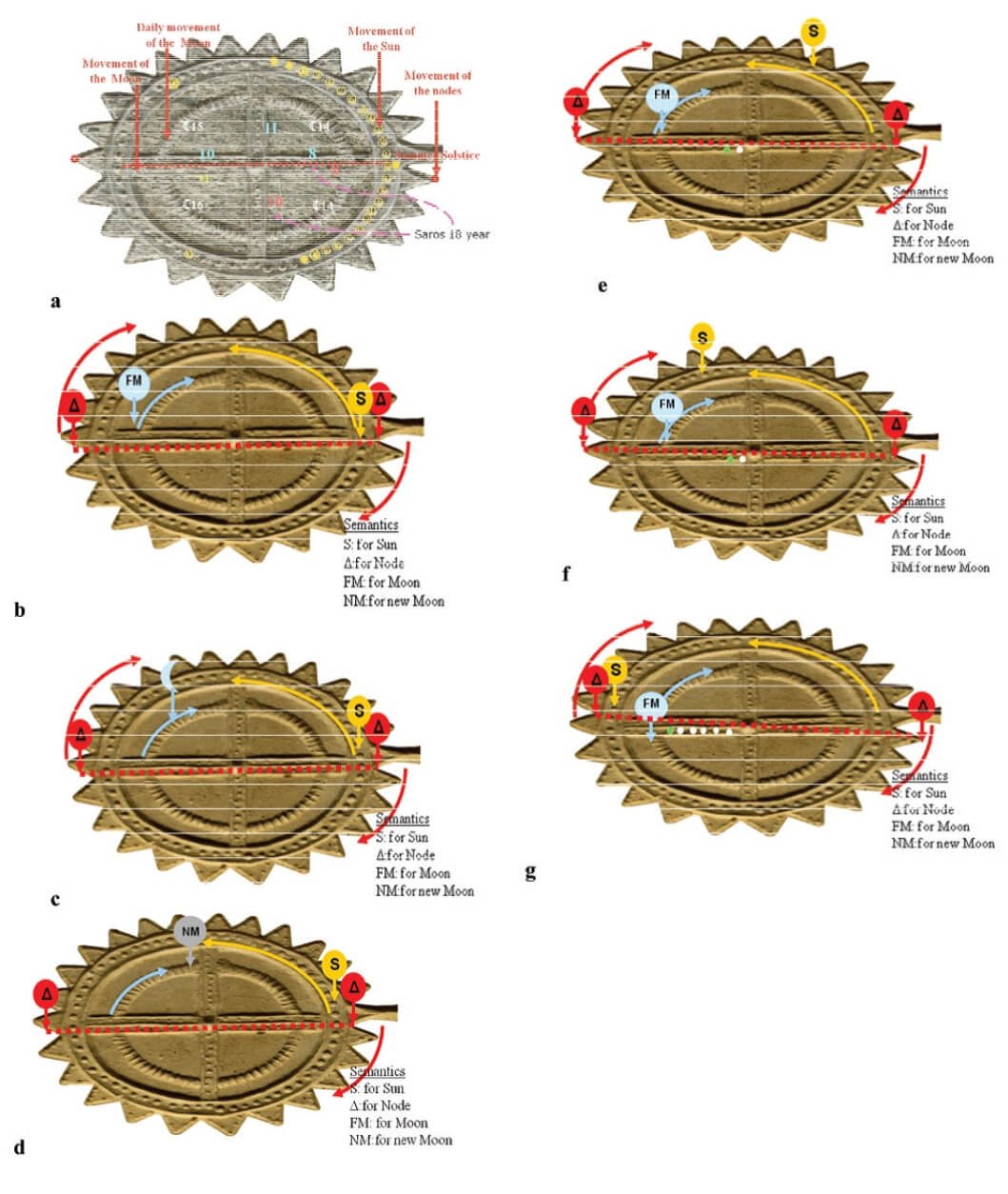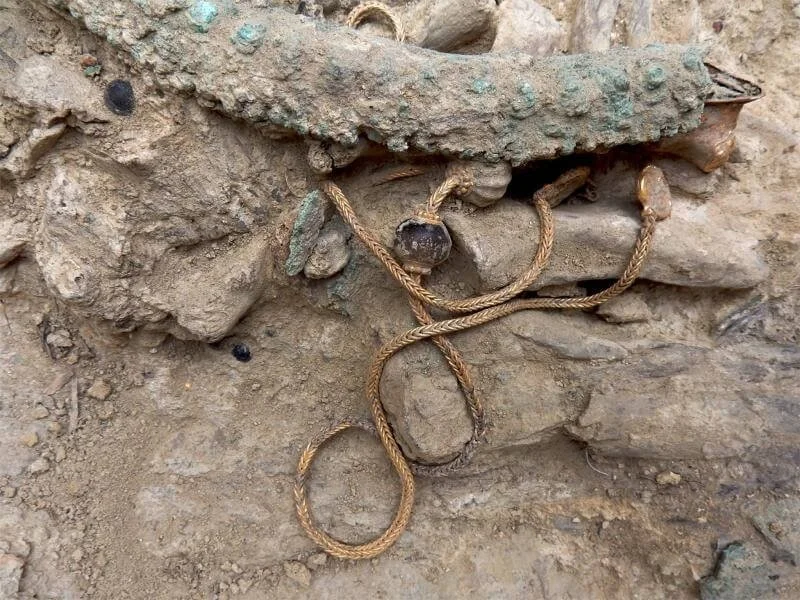BY THE ARCHAEOLOGIST EDITOR GROUP
The first analog computer in the history of mankind was discovered by the Minoans, according to the Cretan explorer of Aegean scripts, Minas Tsikritsis.
According to the researcher, the Minoan object found in 1898 in the Palaikastro of Sitia predates the "mechanism of Antikythera" by 1,400 years and is the first analog computer in history, and a portable one.
"While searching for Minoan finds with astronomical representations in the Archaeological Museum of Heraklion, we found a stone matrix from the Palaikastro region of Sitia. Stefanos Xanthoudis and Arthur Evans had referred to this matrix and explained that the engraved symbols on the surface of the matrix were related to the sun and the moon," Mr. Tsikritsis points out.
How did it work?
According to the Greek researcher, this matrix was utilized as a matrix for the development of a device that worked as an analog computer for the prediction of eclipses following an initial study of the relief representation of the disc on the right side of the matrix. The mechanism's potential applications as a sundial and a tool for measuring latitude were looked into concurrently.
This construction is able to determine the time and latitude of a place if we use the three tools—two needles and a compass—located in the matrix above the disc.
The disc has 25 triangular shapes around its circumference; if we count them every half hour and place a needle perpendicular to the central dent and align the central cross in the north-south direction, the shadow of the needle will indicate the point on the disc corresponding to the hour of observation. So it seems that this mechanism can be used as a daily sundial (12.5 hours). From this use, it appears that the time corresponds to about 58 minutes, which is very close to the time used today. Considering that one triangular hand (radial part) corresponds to about half an hour, the five points on each triangular hand divide it into five smaller time units, lasting about 6 running minutes.
How did Dr. Tsikritsis arrive at these results?
He has encountered numerous finds of astronomical importance during the past few years while researching Minoan artifacts related to the astronomy of the Cretan-Mycenaean civilization, which he details in his most recent book. He discovered the drawings from the Palaikastro matrix that were published in the "Archaeological Journal" in 1900, as well as the sketches from Evans, the Knossos excavation director's book titled "The Palace of Minos, etc." According to Evans, the images, which include moon and solar emblems, are etched on clay slate tiles from the 15th century. He requested authorization from the Heraklion Archaeological Museum to study the item because the photographs weren't sharp. He was given high-resolution pictures by the director, Mr. G. Rethemniotakis, and the archaeologist, K. Athanasaki. He came to an explanation for the use of this special matrix based on these images, their correlation with other archaeological discoveries, historical and astronomical data on timekeeping and forecasting lunar and solar eclipses, and other information.
Through this matrix, an analog computer is described that measures time, determines latitude, and predicts lunar eclipses!
Such a feat sounds unimaginable in the age of the Argonauts
He first examined and comprehended the operation of the radial disc on the right side of the uterus before studying the disc on the left. A cross, typically regarded as a representation of the sun, may be seen in the center of the disc. He counted 28 numbered moments in the outer circle and 18 moments surrounding the cross symbol after magnifying his discovery. He also recognized the moon symbol (in the shape of a meniscus) below the circle. If the symbol for the sun has 18 moments around it, then the symbol for the moon has 28 moments around it because there are 28 lunar eclipses every 18 years and 11 days. The Chaldeans were aware of the "Saros" recurrence effect of moon eclipses every 18 years and 11 days.
Yet the earliest archaeological evidence of Chaldean references to Saros is from 750 B.C. Such an understanding of the periodicity of eclipses implies that the Minoans either had advanced astronomical knowledge or that the Babylonians or Sumerians originally had this understanding and had adopted it. In addition, there is déjà vu: the Antikythera machine revealed the same prediction based on Sarus!
Dr. Minas is now certain that the Minoans were among the first, if not the first, to discover the concept of Sarus. He believes that this "new" find does not diminish the value of the Antikythera find but rather pushes back the date of its creation by 14 centuries. So we rewrite the introductory chapter in the history of science, starting with the "computer of Palaikastro", 1500 BC".
The creators of the Antikythera mechanism used a variety of remarkable gears for their time in order to predict lunar eclipses. We can detect a straightforward point carving in this matrix. How does it complete the computation?
It is indeed a miracle of an elegant solution with maximum simplicity of construction. The inner circle is divided into two semicircles, each with 29 and 30 engravings. These semicircles represent two lunar months of 29 and 30 days, beginning and ending with a full moon. If we move a needle clockwise in the inner circle every day and another needle counterclockwise in the circumference with the radial triangular teeth every 15 days, we get the course of the moon in relation to the course of the sun.
The rotation of the nodes is depicted by the circle with 58 holes in the "calculating machine of Palaikastro."
A literal definition of an eclipse is "disappearing into shadow." There would be a lunar and solar eclipse each month if the Earth's orbit and the Moon's orbital plane were in alignment. The orbits of the Moon and Earth, however, are in planes with an inclination of 5 degrees, so this is not the case. "Lunar conjunctions" are the locations where the Earth's orbital plane and the Moon's orbital plane cross. We experience a lunar eclipse when the moon is in its full moon phase and the sun is quite close to one of the two lunar conjunctions. Every 18 years, these two points (the nodes) undergo a full revolution. As a result, the nodes rotate three times in a clockwise direction per year, always in diametrically opposed locations. The rotation of the nodes is depicted by the circle with 58 holes in the "calculating machine of Palaikastro." The same cycle of lunar eclipses was repeated when this 18.5-year span was over. The data indicates that the matrix's creators were aware of this cycle of node migration.
Does this "computer" find the eclipses correctly?
According to Dr. Minas, he calculated for sure the last total lunar eclipse on December 21, 2010, and then he found that he could use the same logic to predict the eclipses in 2011 and others in 2015, 2017, and 2018.
In addition, if we align the central cross in the north-south direction and place a needle vertically in the central dent, the shadow of the needle indicates the point on the radial disk corresponding to the observation time. So it seems that this mechanism could be also used as a daily "solar wristwatch", with a time corresponding to about 58 minutes. That is very close to the time used today. Considering that each triangular pointer of the radial part is about half an hour, the five points of each pointer divide it into five smaller time units, lasting about 6 running minutes.
What do the other symbols in the matrix mean?
On the matrix, above the disk, there are three tools for determining the latitude. If the user of the disk used the two needles and the semicircular forceps found in the imprint of the back of the matrix and weekly marked the edge of the shadow when the sun was in the meridian, then he could record (with the angle formed by the needles) the latitude of the place where he was. In the event of a future shift, all he had to do was measure the shadow of the needle in the appropriate week to determine how far north he went so he could return!
this interpretation overturns much of what is believed about the Minoan civilization to this day
Significantly, Dr. Minas also refers to two well-known photographs showing Minoan ships. The first boat is depicted on a Cycladic "pan-shaped" ship from 2300 BC with 14 pairs of oars, suggesting a ship 32 meters long. In another depiction, a fresco from Santorini dated 1640 BC, there is a large boat with 26 pairs of oars, which, according to the author Cavin Menzies, corresponds to a ship 54 meters long. This development of navigation sounds logical for a period of 700 years. But it is not logical for a civilization that developed maritime trade from 2800 BC to 1200 BC to not have developed an appropriate science for its needs. It would have had to develop mathematics and astronomy, among other things.
great correspondence of the matrix with the megalithic formation of Stonehenge
The matrix has the same number of holes (29 + 30 in the inner circle and 57 in the outer circle) as that of Stonehenge. There is the so-called "Circle Z" with 29 holes, and around it is the "Circle Y" with 30 holes. The outer closing circle, which surrounds all of Stonehenge, consists of 57 holes and is called Aubrey Holes. Also in the center of the Temple," there are 19 stones (the so-called Bluestone Petal), but the same number of small holes exist in two areas of the inner cross of the "Matrix of Palaikastro."
The construction of Stonehenge has been attributed to the ancient Celts and their Druids, but excavation findings date it to the 2nd millennium B.C. The known civilizations that could be associated with such a "temple" in the Bronze Age would be the Mesopotamians, the Egyptians, and the Creto-Mycenaeans. However, the only circular structures we know of in any of them are the mounds of Mycenae (16th century B.C.), which are tombs, not temples, and the so-called "Ring of Minos". In this ring, there is a circular building on a hill surrounded by stones. If this structure was an astronomical observatory, it could be related to the circular building structure of Stonehenge. Perhaps, after all, the Minoan civilization was related to the "Hyperboreans" of Britain, as Diodorus Siculus had written.















